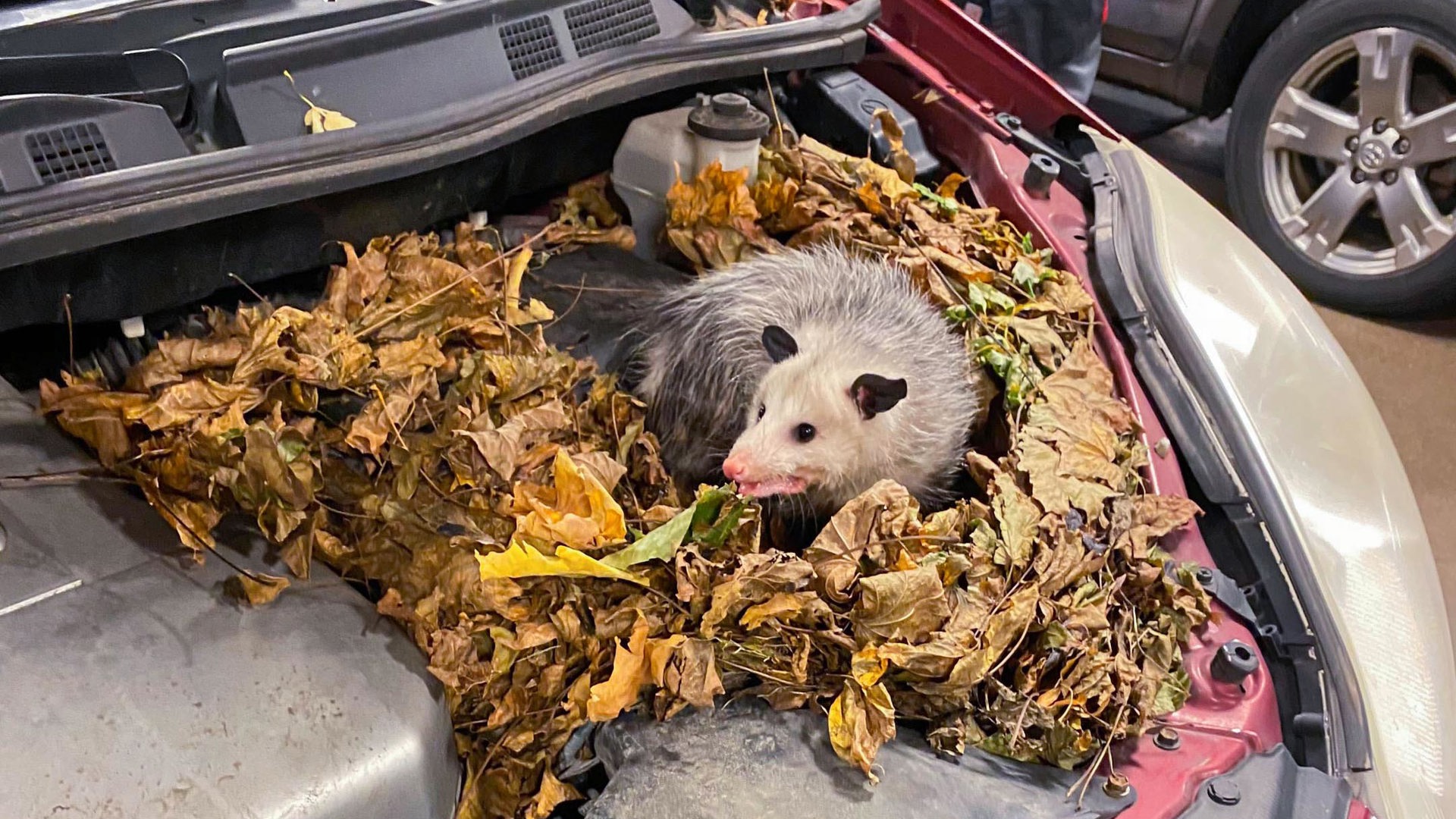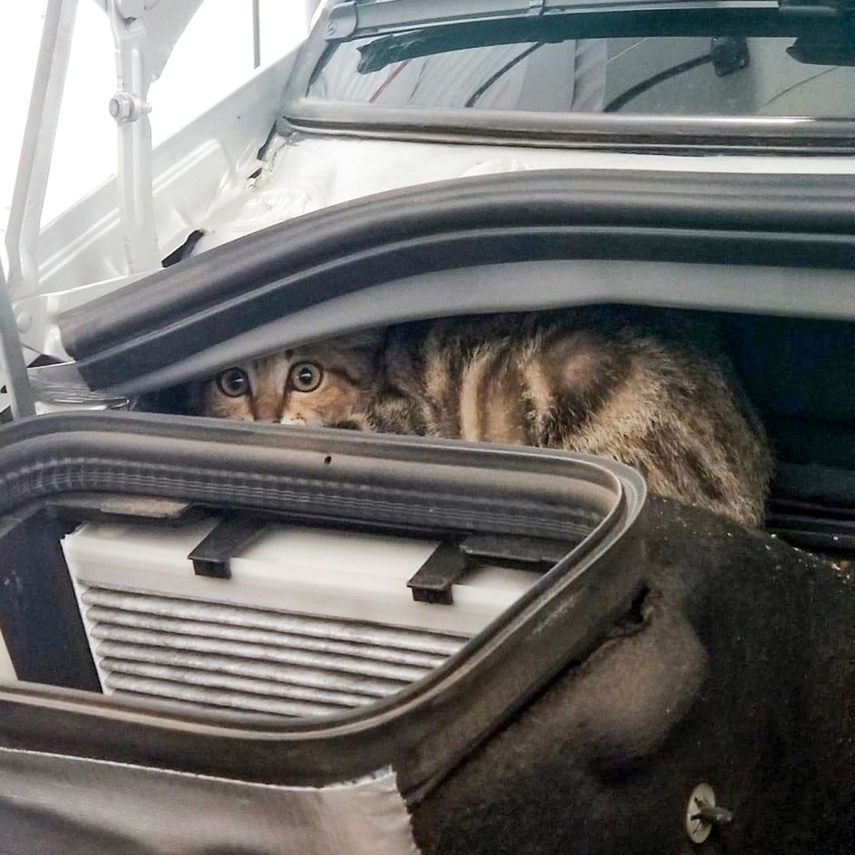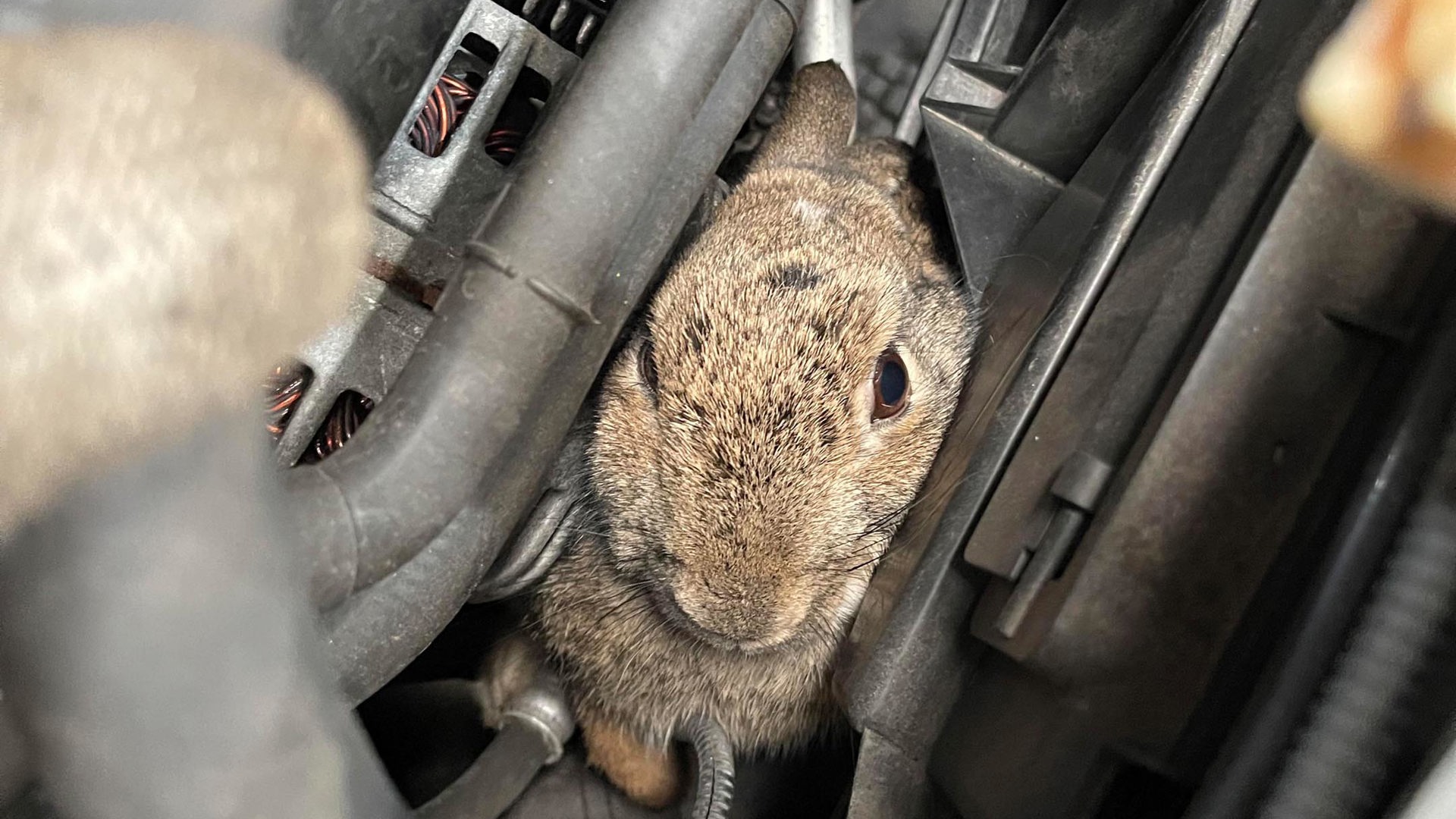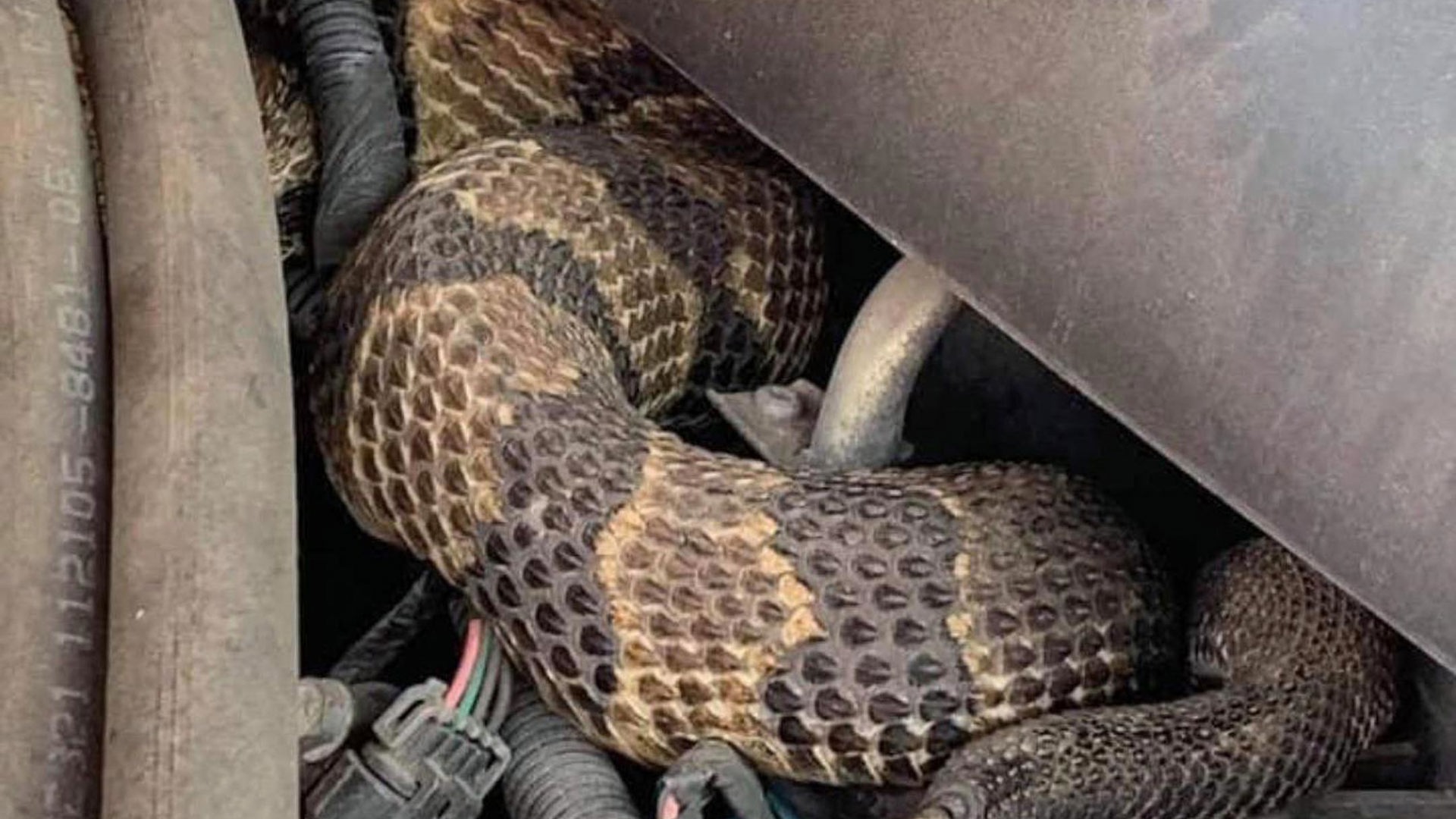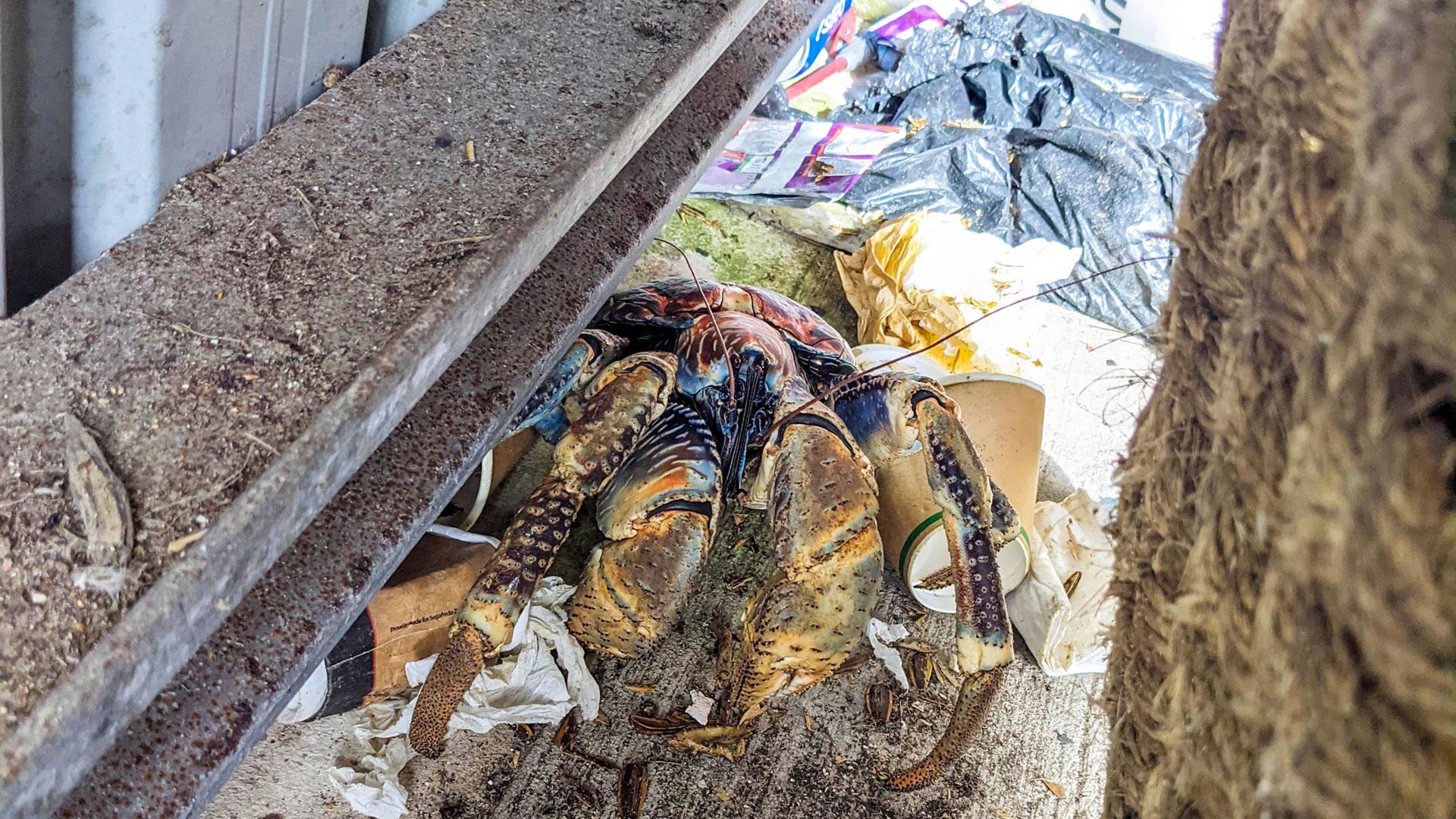Imagine you’re a technician about to do an oil change or tune-up on a customer’s car. You gather the supplies, check the work order, and open the hood, prepared for a routine procedure.
Instead, after popping the hood, you meet an irritable opossum, a horrifying snake, someone’s cat, a sea creature, or even a furry fella named Roger Rabbit.
Finding unwanted stowaways in vehicles is a common occurrence in the automotive service world, especially as temperatures begin to drop and wildlife begins to seek refuge for the winter.
Here’s a collection of tips to help keep wildlife out of your car’s engine, interior, and child seats, and what to do if you suspect an unwanted guest might be along for the ride.
Take Away the Food
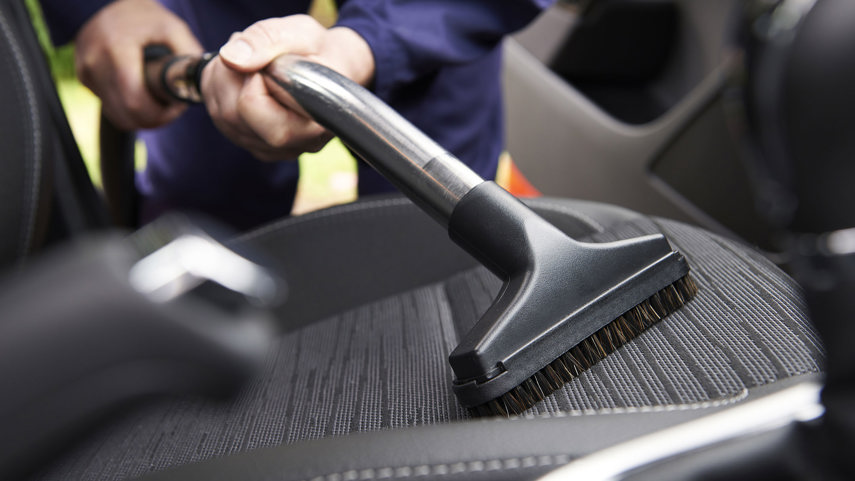
Animals aren’t that different from us humans when it gets cold outside: they just want somewhere comfortable to hang out and eat a lot of food until the winter’s passed.
Your car is full of warm crevices, fluffy stuffing, and probably food. That granola bar in your glove box? The cheerios that have made their way under the rear floor mats? The crumbs from your toddler’s chicken nuggies? Many creatures can be enticed by these aromas from a great distance.
You need to clean your car and get rid of the crumbs. Vacuum in between the seats and under all of the carpets and mats. Clean that filthy child seat. Wipe the dried wing sauce out of your cupholder.
Then, clean up the area around your car, too. Keeping bird food, compost, garbage, or kibble in your garage near your car also tempts wildlife to come in for that closer sniff.
Deploy Deterrents
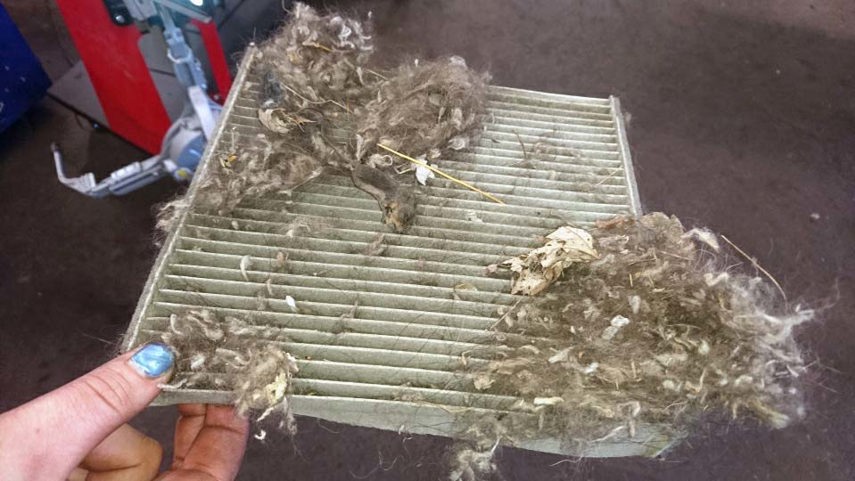
A friend of mine has a beautiful old Jaguar. After storing it for a few years, she found extensive damage to the headliner that occurred when it was eaten by mice, who also used most of its seats as a toilet and birthing area. These mice had expensive tastes!
According to Victor Pest Control, professional products are available to help keep your beloved sports car mouse free, mostly in the form of deterrent drops or scented granules. Some folks have luck using mothballs, dryer sheets, or peppermint oil (which, incidentally, smells nicer than mouse excrement).
While a deterrent product may be overkill for some drivers, they’re relatively cheap and can provide an extra layer of protection.
Evict with Care
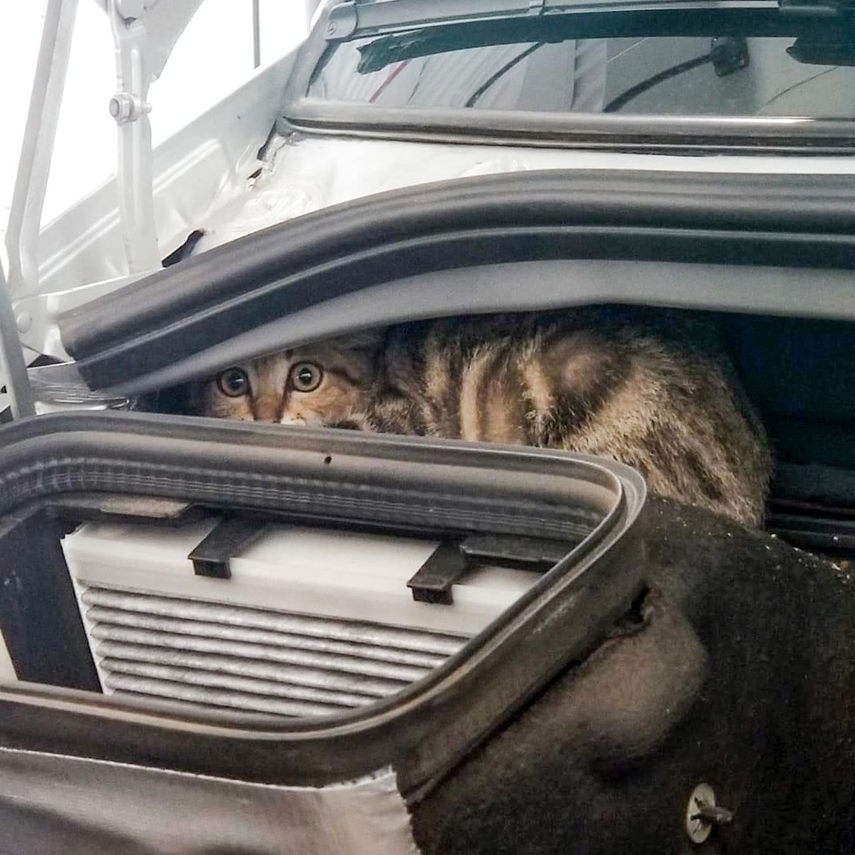
If the first two tips don’t work and you encounter an unwanted visitor, you’ll have to evict the bad tenants. Mice can be easily handled with common traps and some folks say they have luck with parking their car in a sunny location with all of the doors and hood open, thereby taking away the dark and protected shelter the creatures seek. In some cases, this method will have the stowaway see itself out in quick order, so it’s worth a try.
It’s important not to try to manually remove a snake, cat, or various types of crabs unless you’re a fan of ambulance rides. If the creature is too dangerous to handle yourself and doesn’t leave on its own, call for professional help. An animal that’s just been discovered will likely be scared or angry, which means their aggression levels might rise.
And while some customer car creature eviction stories have resulted in great pets for service centres and their staff, closing your hood on an irritable opossum then driving to the shop and making it the technician’s problem is neither appreciated nor advised.
